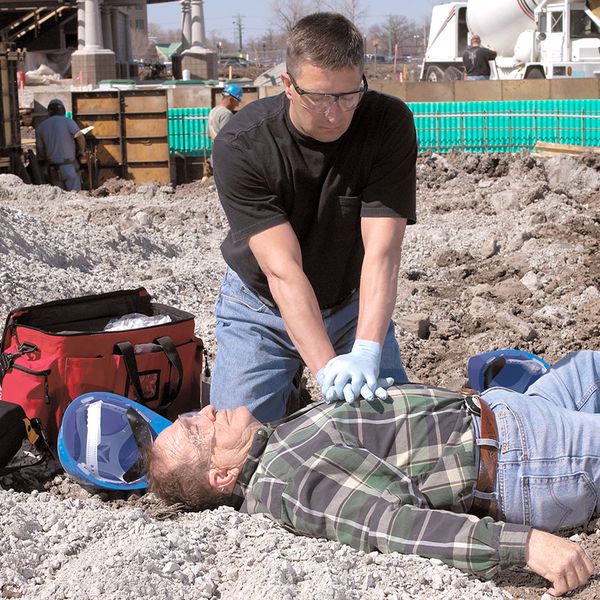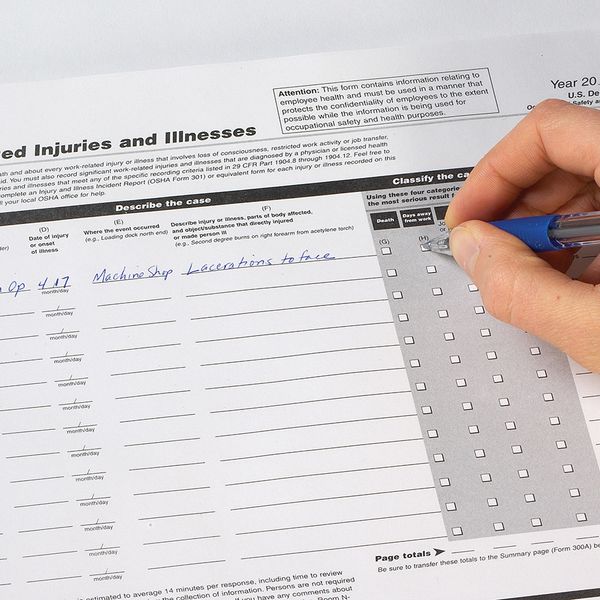Hospital stays and severed limbs: OSHA analysis sends wake-up call
Which industries and states have had a tougher time shaking off worker hospitalizations and amputations since 2015? To find out, OSHA took a fresh look at 2015 to 2021 data under the Severe Injury Reporting Standard. A new report captures the severe injuries (including illnesses) by industry, geography, and injury type. It also focuses on select injuries and illnesses.
Private-sector workers in state-plan states, as well as state/municipal workers, are excluded from the lookback report.
What are severe injury reports (SIRs)?
Many employers submit SIRs as required under 29 CFR 1904.39. Employers submit them (by phone, electronically, or in person) to OSHA within 24 hours of a covered incident. The SIRs describe severe injuries or illnesses resulting in an inpatient hospitalization, amputation, or eye loss that happened on the job among U.S. workers. It’s important to understand the terms, however:
- Inpatient hospitalization is a formal admission to the inpatient service of a hospital or clinic for care or treatment.
- Amputation is the traumatic loss of a limb or other external body part. Amputations do not include avulsions, enucleations, deglovings, scalpings, severed ears, or broken/chipped teeth.
- Loss of an eye is the physical removal of the eye. It does not include loss of sight without the physical removal of the eye.
Overall findings
According to the lookback report, OSHA says it received a total of 70,206 SIRs between 2015 and 2021. Of these:
- 56,696 were for inpatient hospitalizations, with over half in manufacturing, construction, and transportation/warehousing; and
- 18,559 were for amputations, with over half in manufacturing.
The “loss of an eye” must be reported. Yet, the agency explains that there were no eye losses reported during the lookback period.
Be aware that many amputations are so severe they require inpatient hospitalization. A total of 5,049 reported amputations also required inpatient hospitalization. SIRs involving amputation and inpatient hospitalization are counted as one despite being categorized separately here.
Average number of SIRs reported per day
The average number of SIRs reported per day ranged from 24 to 31, reaching its peak in 2018. The recent drop is likely due to the COVID-19 pandemic, company shutdowns, and remote work. What’s more, note that COVID-19 hospitalizations were generally not required to be reported.
Industry findings
According to OSHA, manufacturing and construction sectors reported the highest proportion of SIRs overall. Here’s a peek at the top seven industries for number of SIRs:
- Manufacturing – 23,115 SIRs
- Construction – 12,626 SIRs
- Transportation and warehousing – 6,154 SIRs
- Retail trade – 5,254 SIRs
- Wholesale trade – 3,954 SIRs
- Administrative/support and waste management/remediation – 3,896 SIRs
- Healthcare and social assistance – 3,297
Despite the numbers, the mining, quarrying, and oil/gas exploration sector had the highest rate of SIRs per 100,000 full time equivalent (FTE) workers. Mining and quarrying operations are subject to MSHA (not OSHA) reporting requirements.
Findings by region
Severe work injuries happen everywhere. The average annual SIRs rate per 100,000 FTE workers was highest in these federal-OSHA-regulated states:
- North Dakota (21.9)
- Arkansas (17.8)
- Alabama (17.4)
- Mississippi (17.3)
- Nebraska (16.8)
- South Dakota (15.6)
- Wisconsin (15.3)
- Ohio (15.2)
Parts of body affected
The federal SIR dataset covers injured body part(s):
- Upper extremities (e.g., arms, hands, and fingers) accounted for 40 percent of all employer-reported SIRs in the lookback. Of those, fingertips alone accounted for over a fourth of these.
- Lower extremities (e.g., legs, feet, and toes) accounted for 20 percent of all SIRs reported during the lookback. Of those, leg injuries accounted for 23 percent of all lower extremity injuries.
Check the report for a summary of body parts injured by industry sector.
Leading causes of injuries
From 2015 to 2021, OSHA says severe injuries were most frequently caused by the following:
- Being caught in running equipment/machinery (12,930 or 18 percent), and
- Falls (10,485 or 15 percent).
The report also observes that during the lookback period:
- A total of 1,743 heat-related SIRs were reported from employers covered by federal OSHA.
- Employers reported 58 SIR instances where a worker ingested hazardous substances and required hospitalization. Almost half involved drinking a fluid that was mistakenly believed to be a beverage.
- Sixteen workers were paralyzed because of work injuries.
- Employers in the warehousing/storage industry reported 1,336 severe injuries or about 190 injuries per year.
Underreporting
Although work-related severe injuries and illnesses must be reported, OSHA recognizes that SIRs are significantly underreported. That means average, annual SIR rates by state should be interpreted carefully. OSHA explains that it is unknown how underreporting varies:
- Across states,
- Across industries,
- Over time,
- By injury type, or
- By employer size.
Key to remember
OSHA reviewed SIR data covering 2015 to 2021 and gives a fresh analysis by state, industry, and injury type.




















































